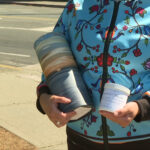As the mercury rises across Toronto this summer, so too does the city’s commitment to keeping youth engaged, safe, and off the streets. City officials announced yesterday a significant expansion of summer violence prevention programs, targeting neighborhoods where young people are most vulnerable to being drawn into violent activities.
The initiative, backed by a $3.5 million investment from municipal and provincial sources, will extend operating hours at 25 community centers across the city’s priority neighborhoods, including Jane-Finch, Malvern, and Regent Park. These centers will now remain open until midnight during peak summer months, offering structured programming during hours typically associated with increased youth crime.
“What we’re seeing is a deliberate shift from reactive policing to proactive community engagement,” explains Dr. Amina Patel, director of Toronto’s Youth Violence Prevention Task Force. “The data clearly shows that meaningful activities during summer months can reduce violent incidents by up to 25% in affected communities.”
The expanded programs include more than traditional recreational activities. New offerings focus on employment skills, entrepreneurship workshops, and mental health support—addressing root causes that experts have long identified as contributors to youth violence.
Seventeen-year-old Marcus Johnson from Scarborough, who participated in a pilot version of the program last year, shared his experience: “Before this, there wasn’t much to do except hang around. Now I’m learning video production and making connections that could turn into job opportunities. It’s changed my whole perspective.”
Toronto Police Service data indicates youth-involved violent incidents typically spike by 18-22% during summer months when school is out. This alarming trend has prompted a coordinated response between law enforcement and community organizations.
The expansion represents a shift in Toronto’s approach to public safety, with research-backed programs replacing purely enforcement-based strategies. Community leaders have lauded the move as a step in the right direction, though some advocates push for even more comprehensive year-round programming.
“Summer programs are essential, but we need sustained engagement throughout the year,” notes Deshawn Williams, founder of Youth Futures, a community advocacy group. “Violence doesn’t take seasons off, and neither should our prevention efforts.”
The initiative has garnered rare bipartisan support in Toronto’s typically divided political landscape, with councilors from across the spectrum acknowledging the necessity of upstream interventions.
Parents in affected neighborhoods express cautious optimism. “My son has somewhere positive to go now, with adults who care about his development,” says Natasha Grewal, mother of two teenagers in the Lawrence Heights area. “But this needs to be the beginning of consistent investment, not just a summer solution.”
City officials plan to track program outcomes meticulously, measuring not just participation rates but also community-level impacts on reported incidents and youth well-being. This data-driven approach aims to refine future initiatives and potentially expand successful programs year-round.
As Toronto confronts the complex challenge of youth violence, the question remains: will short-term summer programming translate into lasting community transformation, or will sustained investment be required to address the deeper socioeconomic factors that make young people vulnerable to violence in the first place?

























